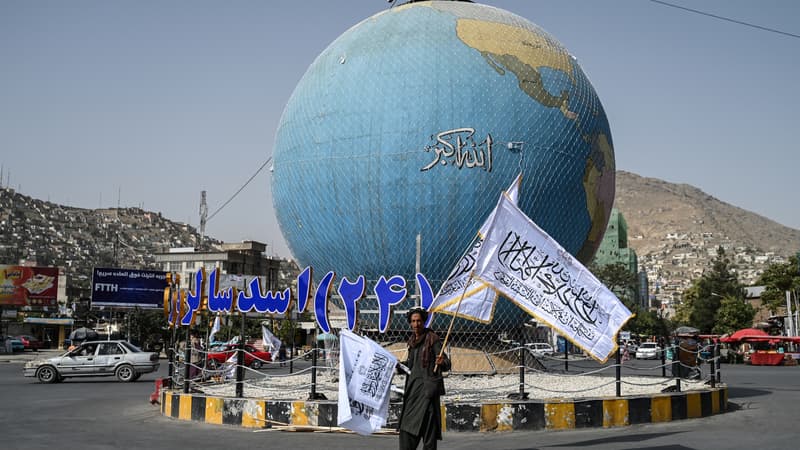The paradox is disturbing. While the Taliban government progressively blocks the Internet throughout Afghanistan, a measure that adds to a long series of restrictions, including the blocking of Tiktok, the PUBG video game and even pornographic sites, it does not seem concerned about the arrival of dozens of Western influencers.
In recent weeks, on YouTube, Instagram and Tiktok, videographers and influencers have been invaded by a sudden desire to travel. But they are not common destinations: they flew to an atypical country, to say the least: Afghanistan. All you have to do is check the hashtag “Afghanistan” or simply type “Afghanistan trip” or “Afghanistan vlog” into the YouTube search bar to see the phenomenon.
In their videos, these influencers promote an idealized image of Afghanistan. In an Instagram story, one of them insists that “the Western narrative has nothing to do with the reality on the ground.” Highlights include stunning landscapes, weddings and ceremonies with locals, and Kalashnikov shooting demonstrations.
Tech & Co has identified around twenty videos, many more than in the entire last decade. If the relative peace that the country has enjoyed since the end of the war and the return of the Taliban partly explains these movements, it is not enough to justify everything. We must especially be interested in digital influence.
For Ahmad Fahim Abdullatif, doctor in political science at the Center for International Research (CERI) of Sciences Po, “it is a way for them (the Taliban power, editor’s note) to whiten their image without resorting to traditional diplomatic channels.” As of 2021, the Taliban regime has yet to obtain formal diplomatic recognition internationally, with the recent exception of Russia. “So they don’t have the means to do lobbying or diplomacy. Therefore, using these influencers is in their best interest,” he explains.
For his part, Adam Baczko, political scientist responsible for research at the CNRS and author of War by law. Taliban courts in Afghanistan (CNRS Éditions), adds: “Afghanistan’s political isolation, particularly imposed by Western countries, means that we know very little about what is happening there. Few journalists or researchers go there. This opens an opportunity for the regime: just let people come, they will tell more positive things than the dominant narrative.”
Carefully prepared trips
“The influencers who come to Afghanistan are not always very scrupulous or morally rigorous. They react very naively to orientalist representations of Afghanistan. Their speech is: ‘Afghanistan is poorly represented by the West, I will show you the true face of the country’. They present themselves as actors fighting for the Afghan people, but their approach is still very naive,” says Ahmad Fahim. Abdullatif.
Among the French and American cameramen contacted by Tech & Co… none responded to our requests.
But for many of them, the trip to Afghanistan is carefully prepared and, above all, they have the constant “protection” of the authorities. Places, events and people encountered… everything seems to be organized with meticulous precision. “Something that is not new,” adds the researcher. “The Taliban took them to selected places. It is a classic method, already used by the Syrian regime of Bashar al-Assad with its organized trips.”
The English-language magazine The Diplomat, which covers news from the Indo-Pacific region, confirms this phenomenon and also asks: “Why restrict local media while using these same platforms for international propaganda?”
More malleable and controllable, influencers are more easily integrated into a propaganda discourse. “The experience of the first Taliban regime (1996-2001) demonstrates its long-standing hostility towards independent media,” the outlet notes. Today they use digital platforms “to recruit, spread their propaganda and strengthen their legitimacy, thus amplifying their influence far beyond Afghan borders.”
“These tools are used to strengthen the regime and its discourses, while the Taliban, in turn, restrict the use of these same platforms by Afghan women, thus preventing the dissemination of their stories,” Nasratullah Taban, an independent Afghan journalist who covers Central Asia, analyzes in The Diplomat.
“Part of Western responsibility”
Contacted about this issue by email, the Afghan Ministry of Information and Culture did not respond to our requests. This lack of response keeps the real motivations and possible plans of the Taliban power unclear. However, it also underlines the political-diplomatic isolation of the country, for which the West bears its share of responsibility.
For Adam Baczko, the arrival of influencers is a direct consequence of the lack of information we have about the country. “The political isolation of Afghanistan, imposed in particular by Western countries, means that we know very little about what happens there. Few journalists go there. This opens an opportunity for the regime: just let people come, they will tell more positive things than the dominant story,” he analyzes.
“There is a serious lack of reliable information. In the absence of data, we live on a mixture of rumors and stereotypes applied to the country. The true response to the Taliban regime is a discourse based on facts, disseminated by correspondents and researchers who work in the long term,” he concludes.
An equation that seems insoluble, since to meet these three prerequisites it is necessary to have transparent and free access to a country, to a population, to places to live… However, in Afghanistan the press is controlled, Western press correspondents in danger, humanitarian aid cruelly restricted and human rights violated. From there to say that videos from “authorized” influencers have a bright future ahead…
Source: BFM TV


